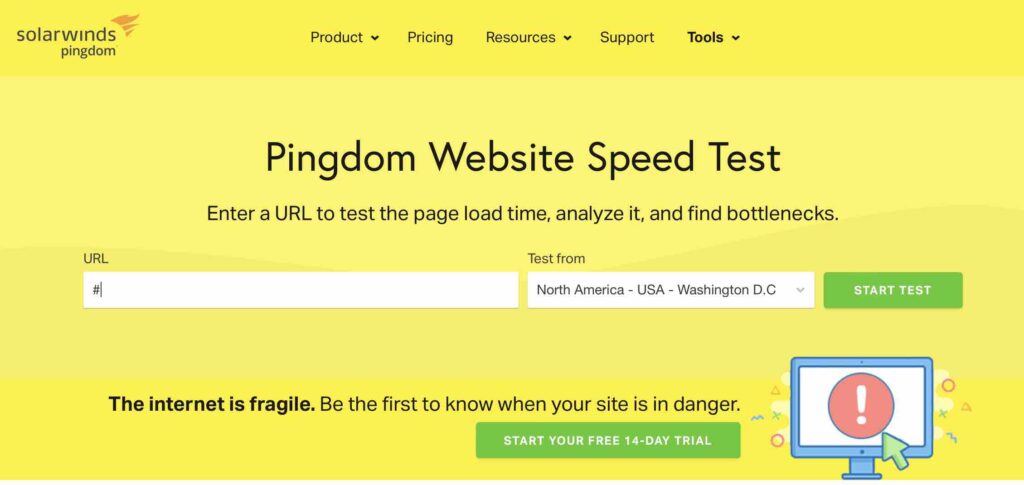Understanding the Importance of Regular Web Maintenance Mastery
In the vast and ever-evolving digital landscape, your website is the digital storefront of your brand, organization, or personal identity. Maintaining its health and functionality is paramount for sustained success. In a previous article, we address the issue of website maintenance. In this comprehensive guide, we will further delve into the intricacies of website maintenance mastery, focusing on avoiding common pitfalls that can:
- Hinder performance and user experience,
- Compromise your website security, and
- The overall success of your brand.

The Backbone of Website Maintenance Mastery
Regular website audits serve as the backbone of effective maintenance. It’s a proactive approach to identifying and rectifying potential issues before they escalate. Maintenance audits encompass a thorough examination of your site’s:
- structure,
- content, and
- performance metrics.
Neglecting these audits can result in a myriad of problems that may go unnoticed until they accumulate into a substantial obstacle.
The Unseen Dangers
Website maintenance mastery entails being mindful of the dangers of neglecting regular site audits for unseen dangers. They include broken links, outdated content, and unnoticed security vulnerabilities that can silently erode the integrity of your website. By scheduling and conducting regular audits, you create a safety net, catching and addressing issues in their infancy, and preventing them from becoming major setbacks.
Actionble Website Maintenance Mastery # 1: Periodic Audit Checklist
As part of your website maintenance mastery, these are the four key audit items that you should periodically comprehensively scrutinize:
Technical Performance Evaluation:
Evaluate server response time, page loading speed, and overall website performance. Identify and rectify any bottlenecks that could impede user experience (UX).
We live in a fast-paced world. Web visitors have little patience for websites that load slowly, search engines have even less tolerance, and will punish you for low-speed page load.
You should audit your server response time. This is the amount of time it takes for a server to respond to a request from your client. This is because you wouldn’t want to lose a customer, or revenue and suffer a lower search engine ranking position.
Please, note that your server response time is not the same as your page load speed.
When a user makes a request, server response time is the initial time it takes for the request to get a response.
The total time it takes for a webpage to load and display a request from a user is the page load speed.
Content Relevance:
Periodically, audit your content for relevance. The world’s knowledge base grows exponentially. What was relevant 12 months ago may not be so today. We advise that you update your contents that are 12 months or older. Remove and replace all dated content. Remember that visitors who visit your website want information that has relevance. Dated content may affect your search engine result page (SERP) ranking.
Actionable Website Maintenance Mastery # 2: Periodic SEO Health Audit
A website health check is one of the least exercise website owners do. This is especially true for websites that are part of a Managed WordPress Hosting plan. The reason is obvious: Hosting plans are updated for useability and security updates very frequently as part of the services provided by the CMS or hosting partner and provider.
But you should carry out SEO health check of your site periodically. There are several free tools that you can use for this purpose. They include but are not limited to:
- Pingdom Website Speed Test (tools.pingdom.com)
- Website Grader (by hubspots.com)
- Google Analytics (analytics.google.com)
- And many more
As part of your SEO health check, perform this analysis: keyword rankings, meta tags, page performance in general, content size, image size, and so on.

As part of your SEO health check, perform this analysis: keyword rankings, meta tags, page performance in general, content size, image size, and so on.
Security Measures:
There are several basic security protocols that you can employ for the security and safety of your website. They include but are not limited to:
- Install SSL certificate
- Use reliable website hosting partners.
- Use strong passwords for your website and enforce the same measures for the backend of your website.
- Update your website regularly
- Use high-rated anti-malware software
- Use a web application firewall
- Update your security plugins
Actionable Website Maintenance Mastery # 3: Fortify Your Digital Fortress
The Stakes of Ignoring Security Measures
The importance of securing your website cannot be overemphasized. This is because the consequences of a hacked website can be very costly. For instance, a hacker who gained access to your website can infest your site visitors and your customers, especially if your site is for e-commerce. This will certainly scare your customers away and they may not return even after you have resolved the issue.
The number of websites that are hacked continues to grow year in, and year out. For instance, the number of vulnerabilities grew by 120 percent between 2020 and 2021.
Ignoring website security measures is equivalent to leaving the front door of your digital retail store open for potential intruders. Cybersecurity threats are expensive. It is pervasive. Businesses, small and large are susceptible to attacks. The repercussions of a security breach extend beyond data loss; they can damage your reputation, erode user trust, and significantly affect your capacity to generate revenue and in extreme cases, close business.
Website Maintenance Mastery # 4: Essential Security Measures
- SSL Encryption: Ensure your website is equipped with Secure Socket Layer (SSL) encryption to protect data transmitted between users and your server. This not only secures user information but also boosts your search engine rankings.
- Regular Software Updates: Keep your website’s software, plugins, and CMS up-to-date. Outdated software is a common entry point for hackers, and timely updates patch vulnerabilities.
- Firewall Protection: Implement a robust firewall to monitor and filter incoming and outgoing network traffic. This serves as an additional layer of defense against malicious activities.
- Strong Password Policies: Enforce strong password policies for all user accounts associated with your website. This includes administrators, contributors, and users. Weak passwords are an open invitation to unauthorized access.
- Regular Backups: Create and regularly update backups of your website’s data. In the event of a security breach or data loss, backups ensure a swift recovery.
By incorporating these essential security measures into your maintenance routine, you erect a formidable defense against potential threats, ensuring the long-term integrity of your website.
The Significance of Swift Loading Times
A serious business is expected to have a website. And the website must be mobile-responsive. This is because most consumers are constantly on the go and the attention span in modern society is very short.
Your website and webpage should load very fast. As a matter of fact, after about seven seconds (max.) or less, most web browsers are already back on the SERP in search of another website or webpage that addresses their pain point.
Website and webpage load time or load speed are important factors in Google’s ranking algorithm. A faster load time means that Google can crawl your website and webpage faster. Also, your website users are more likely to successfully access the information they need and will stay longer on your site. Moreover, the longer a visitor stays on your website, the more likely they are to patronize what you offer.
Webpage load speed depends on three factors; namely
- First Contentful Paint (FCP): how long it takes for the first piece of content to land on a webpage
- DOMContent Loaded (DCL): how long it takes for every bit of code to load both on the top and bottom web page.
- Largest Contentful Paint (LCP): this marks the point in the page load timeline when the page’s main content has likely loaded.
Website Maintenance Mastery # 5: Improve Your Page Load Time
- Image Compression: Large, uncompressed images are a common culprit for slow-loading websites. Optimize images by compressing them without compromising quality.
- Browser Caching: Enable browser caching to store static files on a user’s device, reducing load times for subsequent visits.
- Content Delivery Network (CDN): Utilize a CDN to distribute your website’s static content across multiple servers globally. This reduces the physical distance between users and your server, decreasing load times.
- Minimize HTTP Requests: Every element on a webpage requires an HTTP request. Minimize these requests by reducing unnecessary elements and using CSS sprites.
- Optimize Code: Clean and optimize your website’s code. Eliminate unnecessary characters, spaces, and unused code to streamline performance.
By implementing these strategies, you not only enhance user experience but also position your website favorably in search engine rankings, contributing to overall digital success.
Strategies for Content Excellence: The Role of Content Management
Effective content management is pivotal for maintaining a website that resonates with its target audience. Lackluster content management can lead to confusion, disengagement, and a decline in search engine rankings.
Organization and Accessibility
Organize your content in a logical and accessible manner. Implement a clear and intuitive navigation structure that allows users to effortlessly find the information they seek. Utilize categories and tags to enhance content discoverability.
Consistent Updates and Relevance
Consistency is key in content updates. Regularly review and update your content to ensure its relevance. Remove outdated information and add fresh, valuable content to keep your audience engaged and informed.
User Engagement and Interaction
Encourage user engagement through comments, social media sharing, and interactive elements. A vibrant community fosters a sense of connection and loyalty among your audience, contributing to sustained website success.
Website Maintenance Mastery # 6: Mobile Responsive Optimization
Mobile Optimization as a Necessity
With the majority of internet users accessing websites via mobile devices, neglecting mobile optimization is a grave oversight. Responsive design ensures that your website adapts seamlessly to various screen sizes, providing an optimal viewing experience for users on smartphones and tablets.
Google’s Mobile-First Indexing
Google prioritizes mobile-first indexing, meaning it primarily uses the mobile version of a website for indexing and ranking. Failure to optimize for mobile can result in lower search engine rankings and diminished visibility.
Testing Across Devices
Regularly test your website across various devices and browsers to identify and address any issues related to responsiveness. User experience on mobile devices should be as smooth and intuitive as on desktops.
Plugins: Functional Enhancement vs Perils of Website Breaks
Balancing Functionality with Prudence
Plugins can enhance your website’s functionality, but an excess can lead to chaos. Each plugin adds a layer of complexity and potential points of failure. Striking a balance between functionality and prudence is crucial for a well-maintained and efficient website.
Regular Plugin Audits
Conduct regular audits of your plugins. Evaluate their necessity, performance impact, and compatibility with the latest software updates. Remove or replace plugins that are redundant or pose a risk to your website’s stability.
Keeping it Lean and Efficient
Opt for lightweight plugins that serve their purpose without unnecessary bloat. Minimizing the number of plugins reduces the risk of conflicts, security vulnerabilities, and performance issues.
Website Maintenance Mastery # 7: Periodic Troubleshoot Your Site Links and Redirects
Broken Links: The Silent Saboteur
Broken links not only disrupt the user experience but also harm your website’s SEO. Search engines consider broken links as a negative signal, impacting your rankings. Regularly monitor and troubleshoot broken links to maintain a seamless navigation experience for your audience.
Automated Link-Checking Tools
Utilize automated link-checking tools to scan your website for broken links. These tools provide comprehensive reports, allowing you to identify and address issues efficiently.
Custom 404 Pages
Create custom 404 error pages to guide users when they encounter broken links. A well-designed 404 page can keep visitors engaged and provide alternative navigation options.
Redirects: The Double-Edged Sword
While redirects are essential for managing changes to your website’s structure or URL, mismanagement can lead to confusion and negative SEO impact.
Choosing the Right Redirect Type
Understand the different types of redirects, such as 301 (permanent) and 302 (temporary). Choose the appropriate redirect type based on the nature of the change to ensure search engines and users are directed correctly.
Updating Internal Links
When making structural changes to your website, update internal links to reflect the new URL structure. This maintains a seamless navigation experience for users and prevents broken links.
Future-Proofing with Emerging Trends
As the digital landscape continues to evolve, staying ahead of emerging trends is vital for maintaining a competitive edge. Explore the anticipated trends in website maintenance for 2024 and beyond.
Artificial Intelligence Integration
The integration of artificial intelligence (AI) in website maintenance is set to revolutionize how issues are identified and addressed. AI-driven tools can analyze data, predict potential problems, and even automate certain aspects of maintenance.
Voice Search Optimization
With the rise of voice-activated devices, optimizing your website for voice search is becoming increasingly important. Understand the nuances of voice search queries and tailor your content to meet the demands of this growing user behavior.
Accessibility Compliance
Ensuring your website is accessible to all users, including those with disabilities, is not only a legal requirement but also a crucial aspect of user-centric design. Stay informed about evolving accessibility standards and integrate them into your maintenance practices.
Conclusion
Website maintenance is a dynamic and ongoing process that requires vigilance, adaptability, and a proactive approach. By addressing and avoiding common pitfalls such as neglecting audits, ignoring security measures, and underestimating the importance of loading times, you pave the way for a resilient and high-performing digital presence.
Whether it’s mastering content management, embracing the responsive revolution for mobile optimization, or navigating the delicate balance of plugins, each aspect contributes to the overall health and success of your website.
As you troubleshoot links, manage redirects, and explore emerging trends in website maintenance, remember that future-proofing your site is as essential as addressing present challenges. By staying informed and integrating the latest technologies and best practices, you ensure that your website not only survives but thrives in the ever-changing digital landscape.
In the realm of website maintenance, mastery is an ongoing journey. With this comprehensive guide, you have the tools and insights to navigate the complexities, avoid common pitfalls, and elevate your website to new heights of success. Stay proactive, stay informed, and let maintenance mastery be the cornerstone of your digital legacy.



